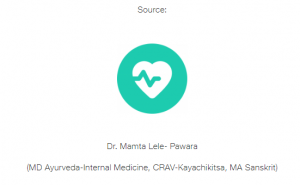Narcolepsy is a neurological disorder characterized by excessive daytime sleepiness (EDS), sudden and uncontrollable episodes of falling asleep, and disrupted nocturnal sleep patterns. This chronic condition affects approximately 1 in 2,000 people globally, often manifesting during adolescence or young adulthood. While narcolepsy’s primary symptom is excessive daytime sleepiness, it is essential to delve into its medical intricacies to comprehend the underlying mechanisms and the impact on individuals’ daily lives.
Neurological Basis
Narcolepsy has a well-defined neurological basis, primarily associated with abnormalities in the brain’s regulation of sleep-wake cycles. One key factor is the deficiency of hypocretin, also known as orexin, a neurotransmitter crucial for promoting wakefulness and regulating rapid eye movement (REM) sleep. In individuals with narcolepsy, the neurons producing hypocretin are either significantly reduced or entirely absent.
The loss of hypocretin function contributes to disrupted sleep patterns, leading to fragmented and unpredictable sleep episodes during the day. Consequently, those affected may experience sudden and uncontrollable urges to sleep, even in situations that demand wakefulness.
Symptoms and Diagnostic Criteria
Narcolepsy is characterized by a constellation of symptoms, and its diagnosis involves a comprehensive evaluation of an individual’s medical history, sleep patterns, and specific diagnostic tests. Besides EDS and sudden sleep attacks, other common symptoms include cataplexy (sudden loss of muscle tone triggered by emotions), sleep paralysis, and vivid hallucinations during the transition between wakefulness and sleep.
Polysomnography, multiple sleep latency tests (MSLT), and hypocretin levels in the cerebrospinal fluid are among the diagnostic tools used to confirm narcolepsy. Polysomnography monitors sleep patterns, while MSLT assesses the individual’s ability to fall asleep during the day.
Impact on Daily Life
Living with narcolepsy can significantly impact an individual’s daily life, affecting their academic, professional, and social pursuits. The unpredictable nature of narcoleptic episodes can make it challenging to maintain consistent employment or engage in activities that require sustained wakefulness. Educational settings may pose particular challenges, as individuals with narcolepsy often struggle to concentrate during lectures or exams.
The emotional toll of narcolepsy is further exacerbated by cataplexy, which can lead to social withdrawal and anxiety about potential embarrassing episodes. Establishing a strong support system, including healthcare professionals, family, and friends, is crucial for managing the emotional and practical challenges associated with narcolepsy.
Treatment Approaches
Narcolepsy management typically involves a combination of pharmacological and lifestyle interventions. Stimulant medications, such as modafinil and armodafinil, are commonly prescribed to enhance wakefulness. Additionally, sodium oxybate, a central nervous system depressant, may be used to address cataplexy and improve nocturnal sleep quality.
Incorporating lifestyle modifications, such as maintaining a consistent sleep schedule, regular exercise, and avoiding stimulants close to bedtime, can complement pharmacological interventions. Behavioral therapies and support groups also play a vital role in helping individuals cope with the challenges posed by narcolepsy.
Ongoing Research and Future Perspectives
Advancements in neurology and sleep medicine continue to shed light on the complex mechanisms underlying narcolepsy. Ongoing research explores the potential genetic predispositions, environmental factors, and immune system involvement in the development of narcolepsy. Understanding these factors may lead to more targeted and effective treatment approaches.
Conclusion
Narcolepsy, a neurological disorder characterized by excessive daytime sleepiness and disrupted sleep patterns, has profound implications for affected individuals. The deficiency of hypocretin in the brain is a central aspect of narcolepsy’s pathophysiology. While there is no cure, a combination of pharmacological and lifestyle interventions can help manage symptoms and improve overall quality of life. Ongoing research aims to unravel the intricate details of narcolepsy, providing hope for more targeted treatments in the future.

